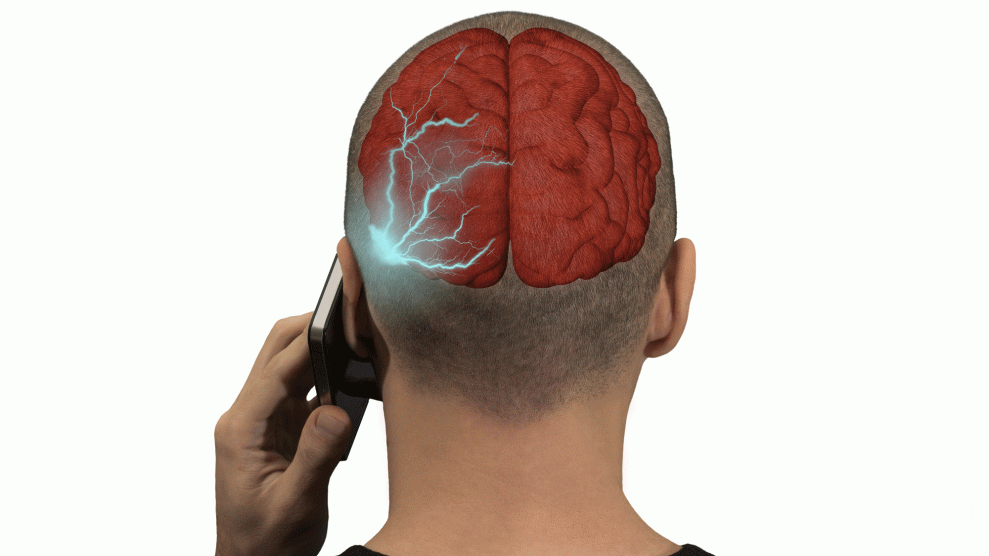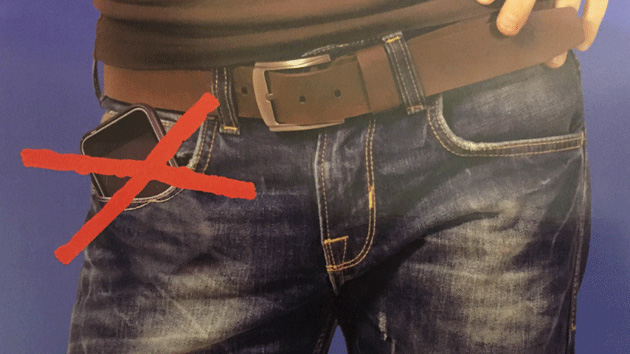
<a href="http://flickr.com/link-to-source-image">Robert Piras</a>/Shutterstock
It’s the moment we’ve all been dreading. Initial findings from a massive federal study, released on Thursday, suggest that radio-frequency (RF) radiation, the type emitted by cellphones, can cause cancer.
The findings from a $25 million study, conducted over two and a half years by the National Toxicology Program (NTP), showed that male rats exposed to two types of RF radiation were significantly more likely than unexposed rats to develop a type of brain cancer called a glioma, and also had a higher chance of developing the rare, malignant form of tumor known as a schwannoma of the heart. The effect was not seen in females.
The radiation level the rats received was “not very different” from what humans are exposed to when they use cellphones, said Chris Portier, a former associate director of the NTP who commissioned the study.
As the intensity of the radiation increased, so did the incidence of cancer in the rats. (The highest radiation level was five to seven times as strong as what humans typically receive while using a phone.) Although ionizing radiation, which includes gamma rays and X-rays, is widely accepted as a carcinogen, the wireless industry has long noted that there is no known mechanism by which RF radiation causes cancer. The researchers wrote that the results “appear to support” the conclusion that RF radiation may indeed be carcinogenic.
The findings should be a wake-up call for the scientific establishment, according to Portier, who is now a contributing scientist at the Environmental Defense Fund. “I think this is a game changer,” he said. “We seriously have to look at this issue again in considerable detail.”
“The NTP does the best animal bioassays in the word,” Portier added. “Their reputation is stellar. So if they are telling us this was positive in this study, that’s a concern.”
Past animal studies have been inconclusive. Most of those suggesting a connection between cellphone radiation and cancer had first exposed rodents to toxic chemicals to induce tumors, which were then shown to grow in response to radiation exposure. But the new study did nothing in advance to stimulate cancer in the animals.
The NTP first decided to investigate the carcinogenicity of cellphone radiation in 2001, partly in response to epidemiological studies showing a correlation between gliomas and cellphone use. Some of the studies even showed that the cancers were ipsilateral—meaning they tended to appear on the same side of the head where users held their phones. But other epidemiological studies haven’t found links between cancer and cellphones.
The Food and Drug Administration, which is charged with regulating the health aspects of consumer products, says on its website that there is “no evidence linking cell phone use with the risk of brain tumors.” It does acknowledge some risk associated with carrying cellphones too close to the body, but only due to the phones’ heating effect.
The NTP findings cast doubt on that conclusion: The study was designed to control for heating effects by ensuring that the body temperature of the exposed rats increased by less than 1 degree Celsius. “Everyone expected this study to be negative,” a senior government radiation official told Microwave News, which was shown partial results from the study earlier this week. “Assuming that the exposures were carried out in a way that heating effects can be ruled out, then those who say that such [carcinogenic] effects found are impossible are wrong.”
The study was expensive in part because it required the construction of special exposure chambers that allowed thousands of mice and rats to receive standardized dozes of radiation. For about nine hours per day, for periods ranging from two months to the lifetime of the animal, the rodents were exposed to the RF radiation frequencies used by second generation (2G) phones—the standard at the time the study was initiated.
Only the test results for rats have been released so far. Female rats didn’t experience significantly higher than normal cancer rates. However, among male rats that received the highest radiation exposures, 2 percent to 3 percent contracted gliomas and 6 percent to 7 percent percent developed schwannoma tumors in their hearts, depending on the type of radiation used. None of the male rats in the control groups developed those cancers.
Potentially confounding the results, the rats exposed to radiation on average lived longer than those that weren’t. Some outside reviewers argued that the study’s authors should have given more weight to that caveat. Reviewers were also puzzled that the unexposed control rats didn’t exhibit the usual number of brain tumors. “I am unable to accept the authors’ conclusions,” wrote Michael Lauer, the deputy director of the National Institute of Health’s office of extramural research.
In the United States, of about 25,000 malignant brain tumors diagnosed each year, 80 percent are gliomas. Malignant brain tumors are the most common cause of cancer deaths in adolescents and adults ages 15 to 39.
The authors of the NTP study did not say how their results might translate into cancer risk for humans. But “given the extremely large number of people who use wireless communication devices,” they wrote, “even a very small increase in the incidence of disease resulting from exposure to RFR resulting from those devices could have broad implications for public health.”
The wireless industry and many media outlets—particularly tech sites, which depend on the industry for advertising—have confidently proclaimed that the science on cellphone safety is settled. You “can’t choose to ‘believe’ in facts because they are, well, facts,” Charlie Sorrell wrote in Wired in 2011, after detailing the results of a Danish epidemiological study showing no link between cellphone use and cancer. “So there you go, people. Finally you can ditch that dorky Bluetooth headset. Your brain isn’t being microwaved after all.”
But Portier says there still isn’t enough data to consider the case closed. “There are arguments in the literature now that we are at the beginning of an epidemic of cancers,” he told me. “There are arguments against that. It is not clear who is right. I have looked through it. It’s a mixed bag.”
“We spend as a nation god-awful billions of dollars using our cellphones,” he adds. “We are significantly exposed on a constant basis and yet we spend almost nothing on research in this area. We need an influx of research dollars if we want to understand what may be happening, and hopefully be able to prevent it while we still have the time.”
This article was updated to reflect criticism of the study’s conclusions by outside researchers.
















